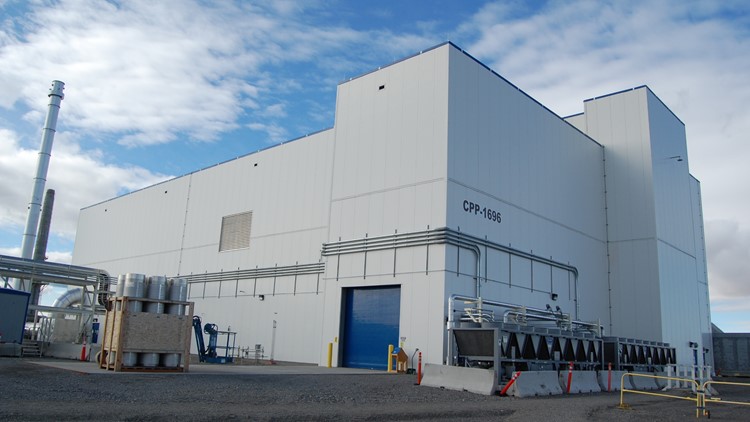BOISE, Idaho — An eastern Idaho nuclear facility is getting closer to successfully treating high-level liquid radioactive waste stored in tanks above a massive aquifer, federal officials have said.
The U.S. Department of Energy said Tuesday that tests on liquid that simulates radioactive waste have proven the Integrated Waste Treatment Unit can operate as designed to treat 900,000 gallons (3.5 million liters) of liquid waste.
The most recent test lasted 50 days and treated about 62,000 gallons (235,000 liters) of non-radioactive "simulant" that mimics the liquid radioactive waste.
"The takeaway from this and the previous 30-day demonstration runs is that the IWTU facility and its steam reforming technology works for liquid waste treatment," said Archie Benner of Fluor Idaho, an Energy Department contractor. "The plant operated as designed and we'll now focus on three key process improvements that are necessary to progress to the next level."
Those improvements include designing new filters after the filters at the plant became plugged with fine particles. Officials also want to test a robotic arm for decontaminating canisters. Finally, the department said it's developing a new system for decontaminating some items without disassembling them and manually cleaning them.
The Energy Department initially had a 2012 deadline to remove the liquid waste at its 890-square-mile (2,305-square-kilometer) site west of the city of Idaho Falls that includes the Idaho National Laboratory. The waste is stored in tanks at the federal site that sits above a giant aquifer supplying water to cities and farms in the region.
The missed deadline, which has been extended multiple times, means the Energy Department is violating a 1995 agreement with Idaho to clean up nuclear waste at the site. As a result, Idaho is not allowing the Energy Department to bring in research quantities of spent nuclear fuel into the state for testing at the lab.
Some Idaho lawmakers have said the state should allow in spent fuel regardless of the 1995 agreement because of millions of dollars of federal research money that would follow.
Mark Peters, director of the Idaho National Laboratory, told lawmakers earlier this year that the biggest threat to the facility's status as the nation's primary nuclear research lab is the ban on bringing in small quantities of spent nuclear fuel for research.
But Idaho Attorney General Lawrence Wasden has said penalties in the 1995 agreement are the only enforcement tools Idaho has to get the Energy Department to remove the radioactive liquid waste.



